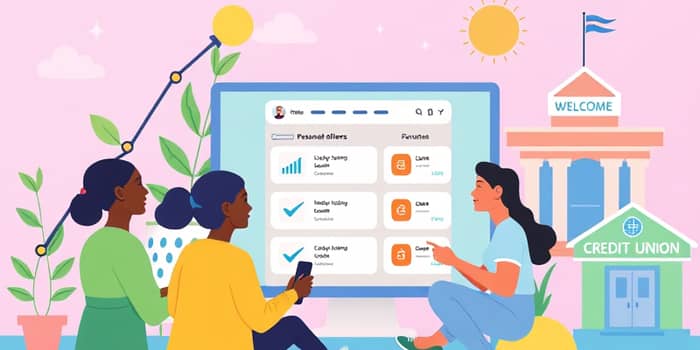
Finding the right personal loan can feel overwhelming, but with clear information and guidance, borrowers can secure terms that truly support their goals. This article illuminates the top lenders of 2025, highlights regulatory protections, and offers practical tips to navigate the evolving market.
As of mid-2025, personal loans remain a versatile financial tool used for debt consolidation, home improvement, medical bills, major purchases, and more. The average personal loan interest rate sits at 20.78% APR, though individual offers vary widely based on creditworthiness and lender policies.
Consumers with strong credit profiles can access rates as low as 5.99% APR, while borrowers with fair or poor credit may face rates approaching 35% to 99.99% APR. Federal credit unions continue to deliver some of the lowest rates, capped at 18%, making them a prime destination for average-credit borrowers.
The following table compares the leading personal loan providers, showcasing their rate ranges, loan amounts, and minimum credit score requirements. This snapshot helps readers quickly identify lenders that align with their needs.
Most personal loans offer repayment periods from 12 to 60 months. Loan amounts range from $1,000 up to $100,000 depending on the lender and borrower profile.
While many top lenders such as SoFi and Citibank charge no origination or late fees, peer-to-peer platforms often impose origination fees of 1%–8% of the loan amount. Borrowers can further reduce costs by enrolling in autopay, which typically yields a 0.25%–0.50% rate reduction.
Modern online lenders pride themselves on swift approval and disbursement. After submitting identification, proof of income, and consenting to a credit check, borrowers can often see funds deposited within 1–3 days. Certain lenders even boast same-day funding and fee-free loans for qualified applicants.
Prequalification tools have become ubiquitous, enabling applicants to compare offers without hurting their credit scores. This prequalification process with soft inquiries empowers borrowers to explore multiple options and lock in the best terms before committing.
Traditional factors such as credit score, debt-to-income ratio, employment history, and income level remain pivotal in approval decisions. However, innovative lenders like Upstart leverage alternative data—education and job history—to extend credit to a broader audience.
Credit unions continue to be a haven for those with average credit profiles. With membership requirements often tied to geographic location or employment sector, these institutions offer some of the most competitive rates and debt consolidation and emergency expenses solutions in the market.
The Truth in Lending Act (TILA) mandates clear disclosure of APR, total interest paid, and all fees, ensuring borrowers can make apples-to-apples comparisons. Meanwhile, the Fair Debt Collection Practices Act (FDCPA) shields consumers from harassment and unfair collection tactics.
By understanding their rights under these regulations, borrowers can confidently negotiate terms and request clearer breakdowns of costs before finalizing any loan agreement.
Interest rates are on an upward trajectory, but sub-12% APR offers still exist for highly qualified applicants. Digital-first lenders dominate in speed and convenience, yet traditional banks and credit unions maintain an edge in rate competitiveness for qualifying members.
When selecting a personal loan, consider these actionable tips:
Securing the right personal loan is about more than just finding the lowest rate. It’s about aligning lender features—like fast funding, flexible repayment options, and transparent fees—with your unique financial goals.
By exploring both digital platforms and credit union offerings, leveraging prequalification tools, and understanding your regulatory rights, you can make an informed decision that enhances your credit profile and supports your journey toward financial wellness.
References













